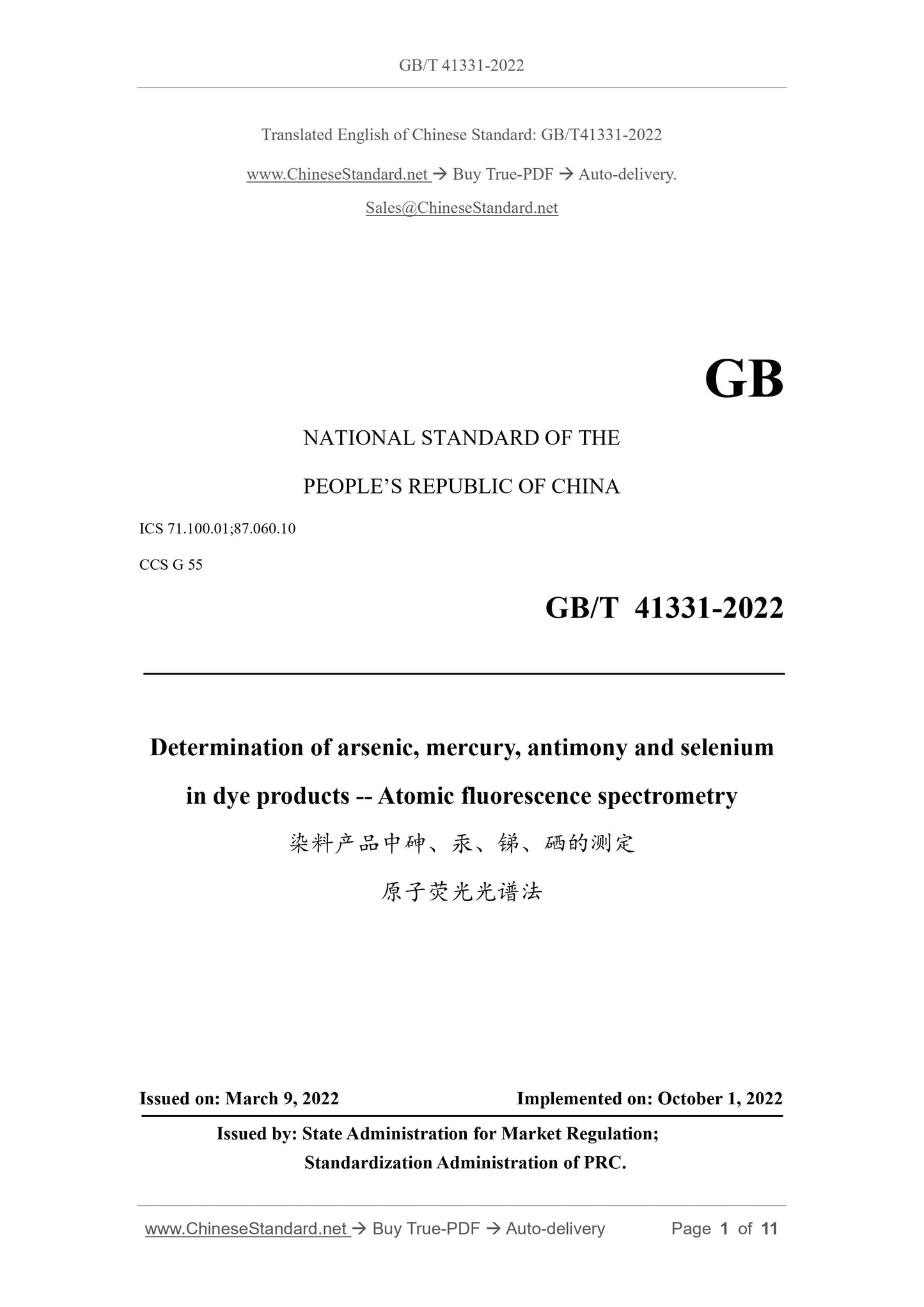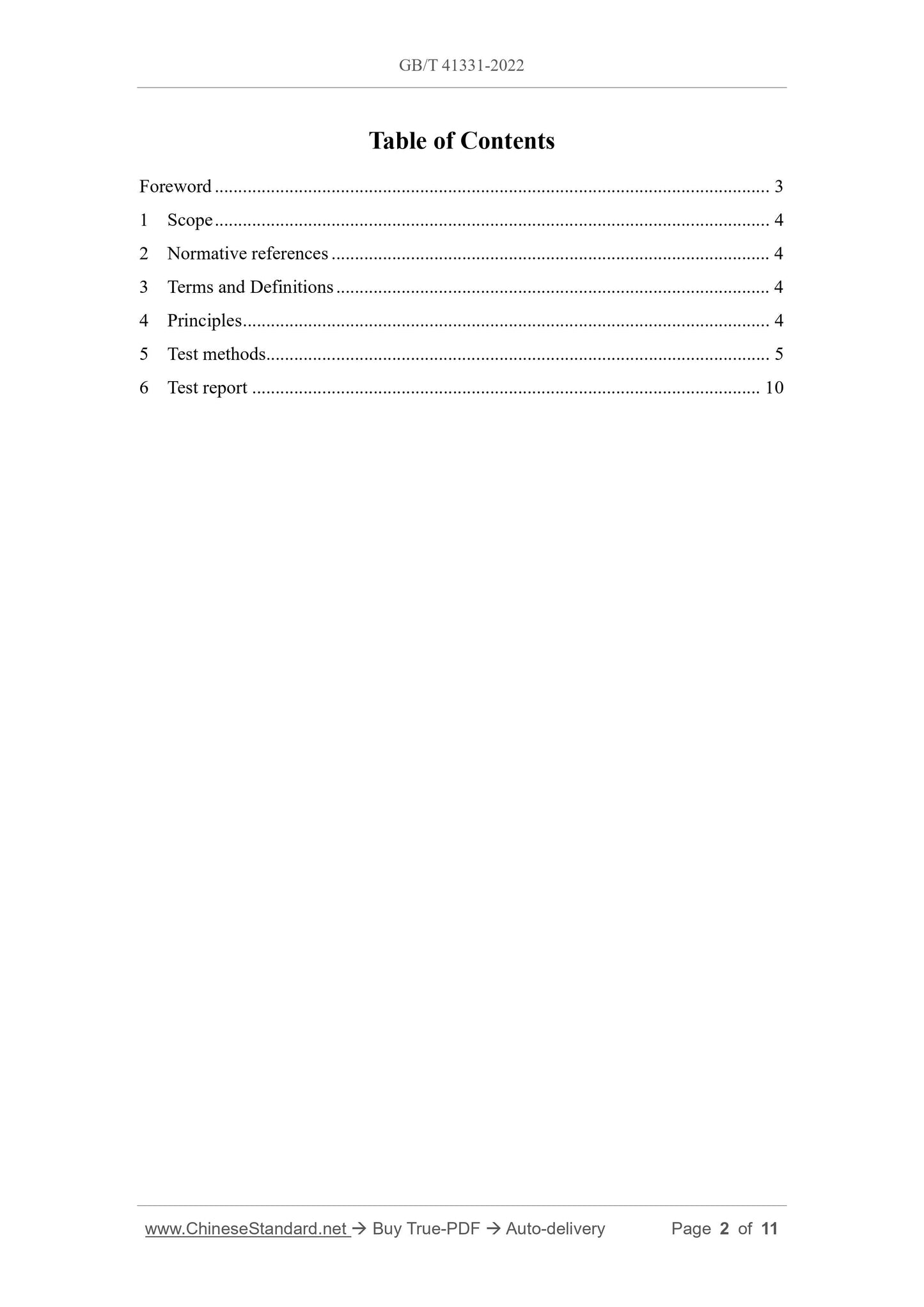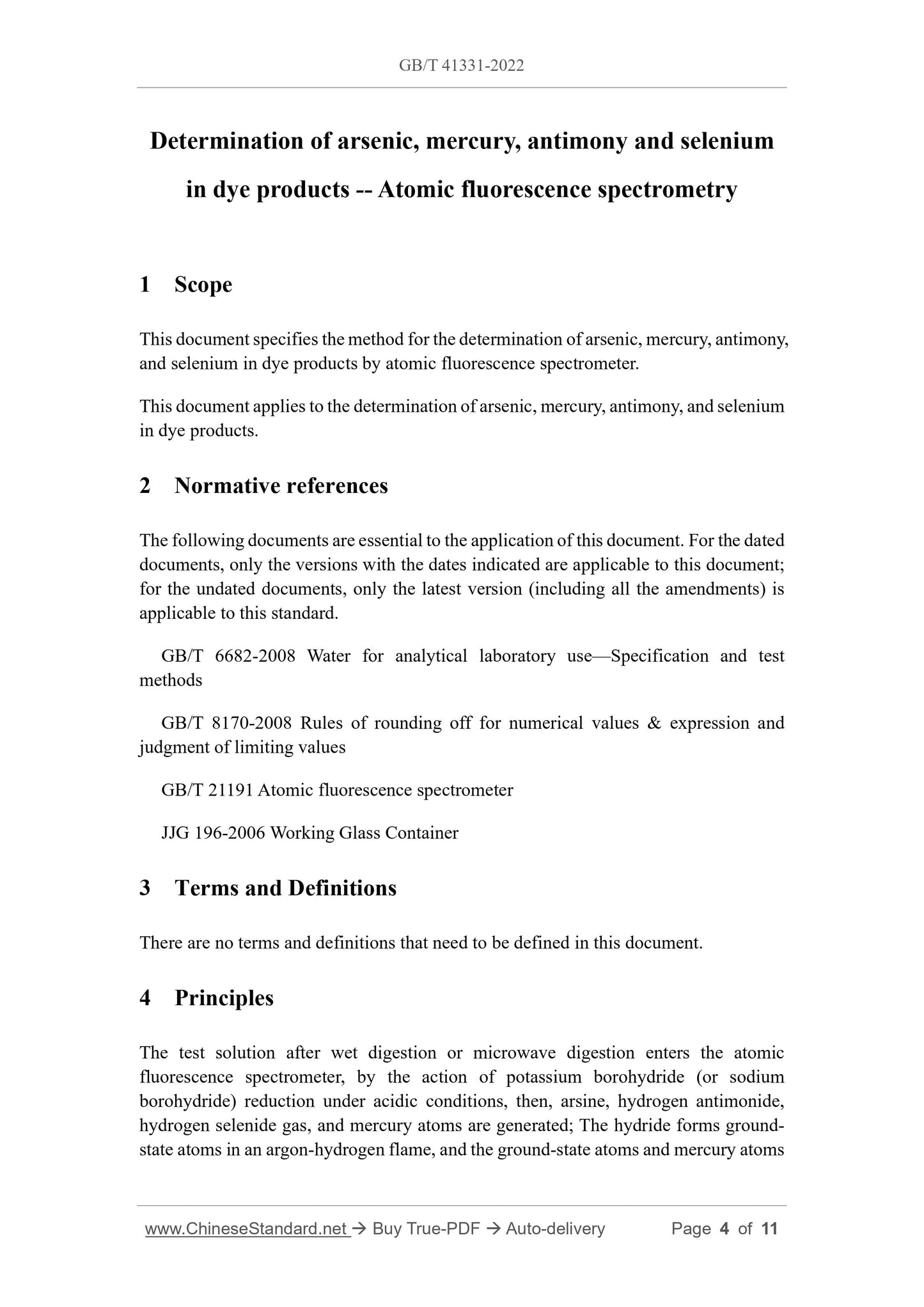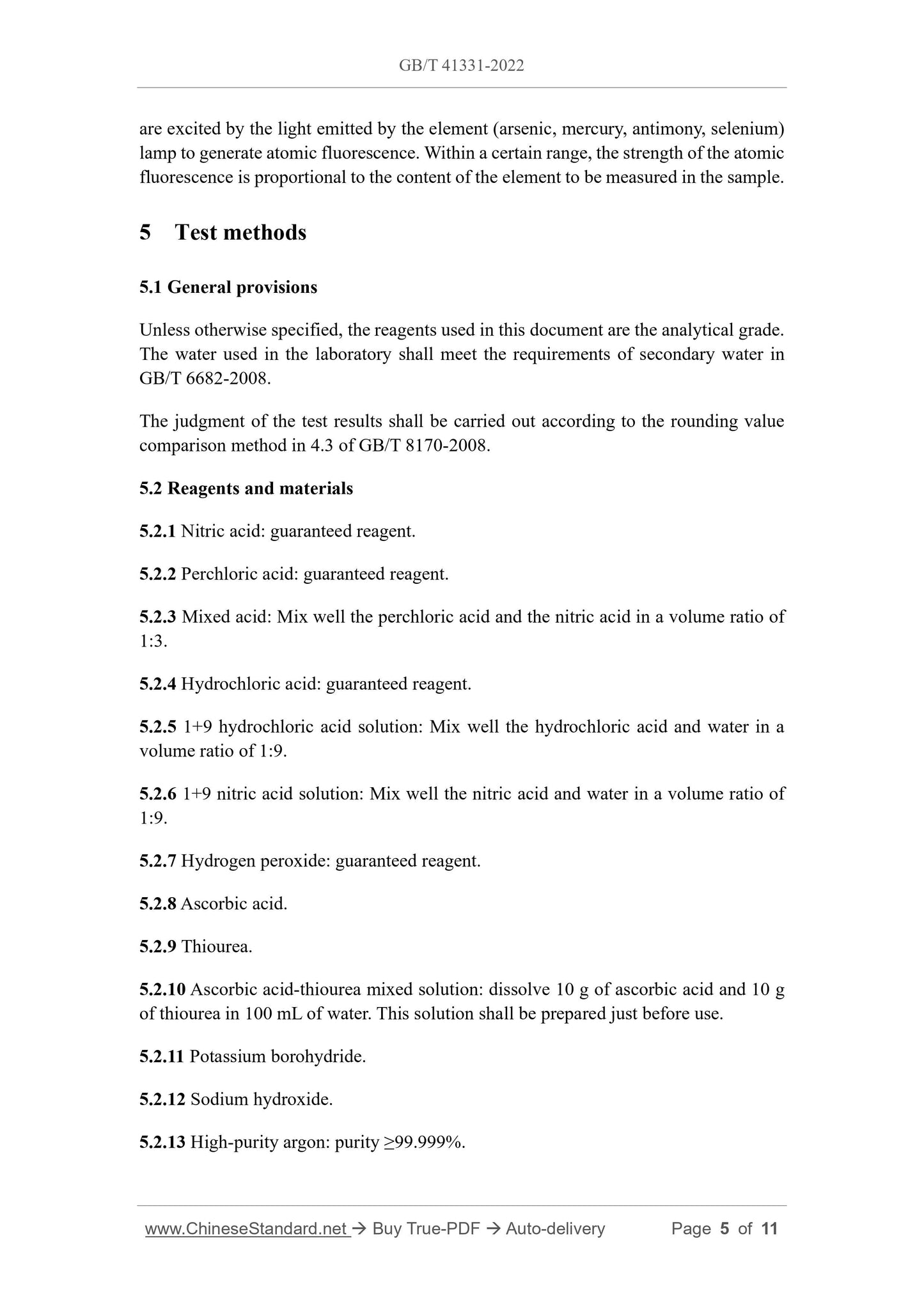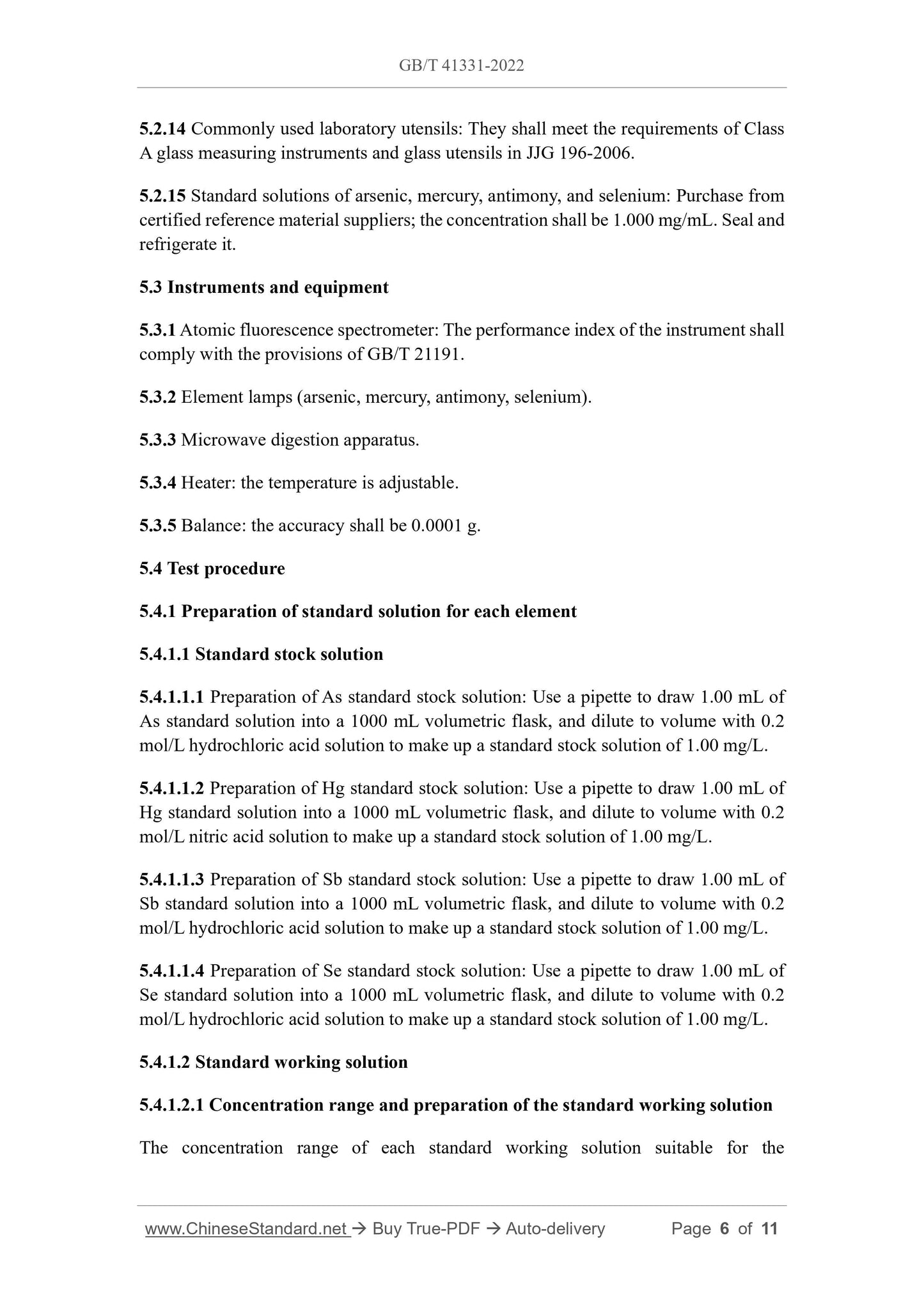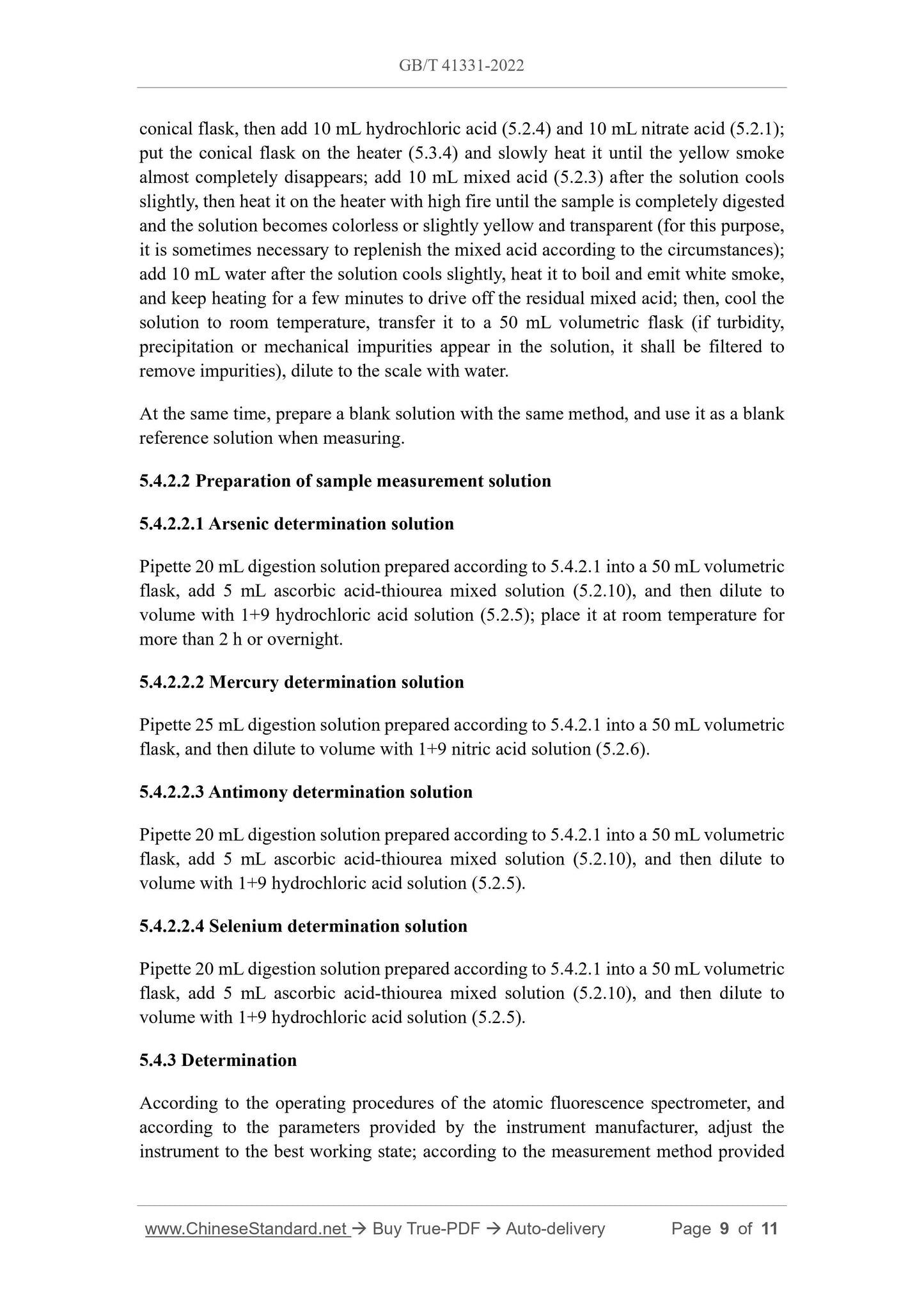1
/
of
6
www.ChineseStandard.us -- Field Test Asia Pte. Ltd.
GB/T 41331-2022 English PDF (GB/T41331-2022)
GB/T 41331-2022 English PDF (GB/T41331-2022)
Regular price
$125.00
Regular price
Sale price
$125.00
Unit price
/
per
Shipping calculated at checkout.
Couldn't load pickup availability
GB/T 41331-2022: Determination of arsenic, mercury, antimony and selenium in dye products - Atomic fluorescence spectrometry
Delivery: 9 seconds. Download (and Email) true-PDF + Invoice.Get Quotation: Click GB/T 41331-2022 (Self-service in 1-minute)
Newer / historical versions: GB/T 41331-2022
Preview True-PDF
Scope
This document specifies the method for the determination of arsenic, mercury, antimony,and selenium in dye products by atomic fluorescence spectrometer.
This document applies to the determination of arsenic, mercury, antimony, and selenium
in dye products.
Basic Data
| Standard ID | GB/T 41331-2022 (GB/T41331-2022) |
| Description (Translated English) | Determination of arsenic, mercury, antimony and selenium in dye products - Atomic fluorescence spectrometry |
| Sector / Industry | National Standard (Recommended) |
| Classification of Chinese Standard | G55 |
| Word Count Estimation | 7,789 |
| Issuing agency(ies) | State Administration for Market Regulation, China National Standardization Administration |
Share
